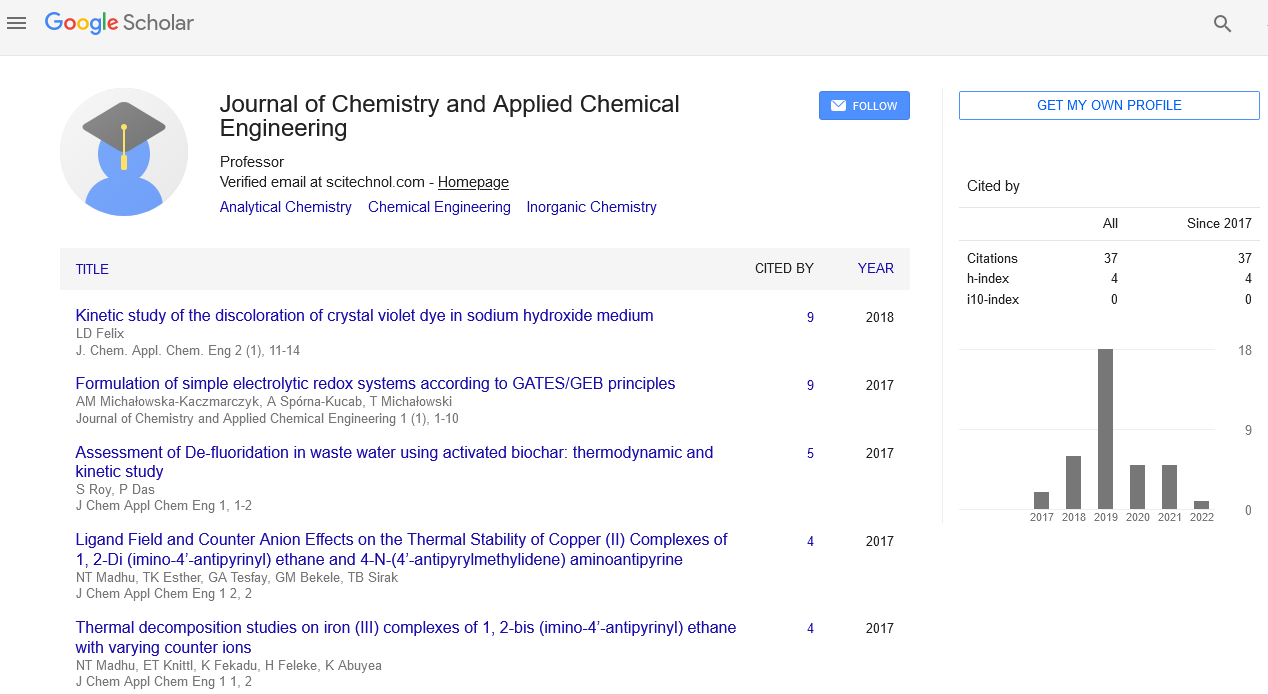Zinc oxide nanostructures grown p-Si electrodes for photo-electrochemical water oxidation
Devika Mudusu and Koteeswara Reddy Nandanapalli
Sungkyunkwan University, South Korea
Indian Institute of Science, India
: J Chem Appl Chem Eng
Abstract
Recent years, the production of hydrogen fuels by adopting different semiconductor materials, Sunlight, and water, has received great attention as an alternative route for the harvesting of solar energy. Among various materials, a highly conductive silicon (Si) is considered as a suitable photoelectrode due to its availability, excellent crystallinity, optimum band gap, and well established processing technology [2]. However, in real practice Si suffers with poor stability and light conversion efficiency due to its chemical degradation and chemical kinetics. Surface protection or functionalization is one of the ideal route to overcome the chemical degradation of Si. Thus, we have developed ZnO protected Si electrode and studied their water splitting performance. Zinc oxide (ZnO) nanostructures (nanoparticles and nanorods) grown p-type Si based electrodes have been developed and studied their photoelectrochemical performance. Nanostructured ZnO films were deposited on highly conductive Si substrates by pulsed spray pyrolysis (PSP) method at a temperature of 400 °C, and then, vertically aligned ZnO nanorods were grown by chemical bath deposition (CBD) method at a bath temperature of 70-80 °C. After a thorough investigation of physical and chemical properties, the photoelectrochemical water oxidation performance of ZnO structures grown Si substrates were studied in an alkaline electrolyte (pH=10) solution under dark and illumination [3]. The as-deposited ZnO films over Si substrate by PSP possess uniform nanoparticles like surface morphology (Figure 1a), whereas the nanostructures developed by CBD over ZnO coated Si substrates consist of vertically aligned nanorods morphology. Both the structures exhibited hexagonal crystal structures and have a preferential growth direction of <001>. The photoelectrochemical water oxidation studies show that the Si/ZnO/ZnO nanorods structures exhibited higher current (nearly ten times) than that of Si/ZnO structures. Unfortunately, both the structures exhibited poor sustainability probably due to the photodegradation of ZnO [4].
Biography
E-mail: devikareddy@gmail.com
 Spanish
Spanish  Chinese
Chinese  Russian
Russian  German
German  French
French  Japanese
Japanese  Portuguese
Portuguese  Hindi
Hindi 